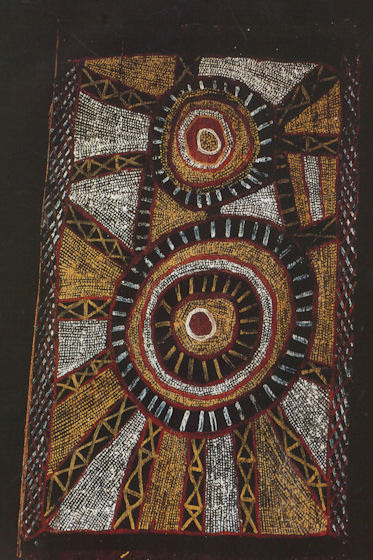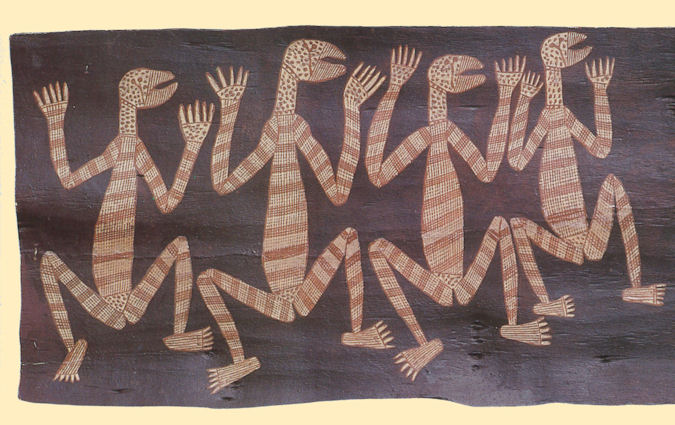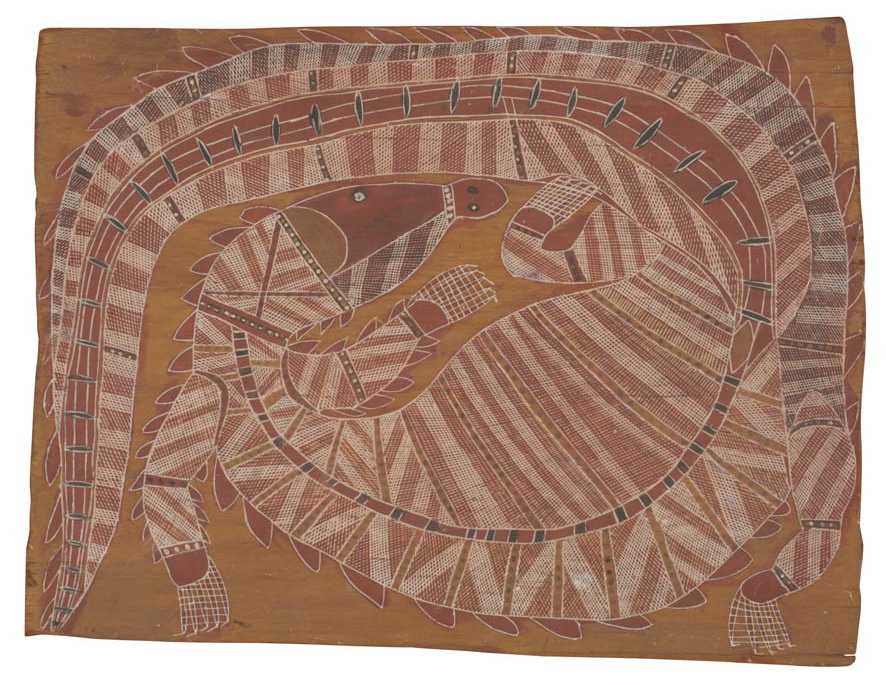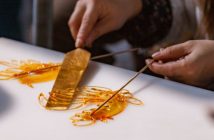 Old Masters: Australia’s Great Bark Artists, an exhibition featuring a delicate and rare collection of aboriginal bark paintings from Australia, is on show at the National Museum of China in Beijing.
Old Masters: Australia’s Great Bark Artists, an exhibition featuring a delicate and rare collection of aboriginal bark paintings from Australia, is on show at the National Museum of China in Beijing.
The exhibition features 123 bark paintings, as well as 18 carvings, three log coffins, and 10 painting tools, representing a significant collection of aboriginal barks.

Bark paintings are designs painted in earth ochres, on the smooth inner surface of sheets of bark from stringybark eucalyptus trees. The origin of the practice of painting on bark cannot be determined, but all the patterns, according to Mathew Trinca, the director of the National Museum of Australia, are handed down through generations, tracing back to cultural relics from when aboriginal people first inhabited the Australian continent.
The 123 barks on display were painted between 1948 and 1985, by master painters including Yirawala and Narritjin Maymuru, Mawalan Marika, David Malangi, and their contemporaries, who brought one of the oldest continuous traditions of art into the modern era. From three different regions—Western, Central, and Eastern Arnhem Land, the featured artists are good representatives of the different painting styles of each region.
Intricate designs such as sketches of animals, birds, and hunting scenes reflect a rich and diverse culture, with each symbol and pattern enriched with specific mythological origins and implications. Indicating the close bond between human beings and nature, the paintings are mainly multicolored with natural colors: deep red, chrome yellow, white and brown.

The exhibition will last until September 2, and will tour to venues across China over the course of 20 months afterwards.
9am-5pm Tuesday to Sunday until Sep 2. RMB 50 (adults), RMB 30 (students). National Museum of China (16 East Chang’an Avenue, Dongcheng District; 6511 6400; info@chnmuseum.cn).

Photos: National Museum of Australia




